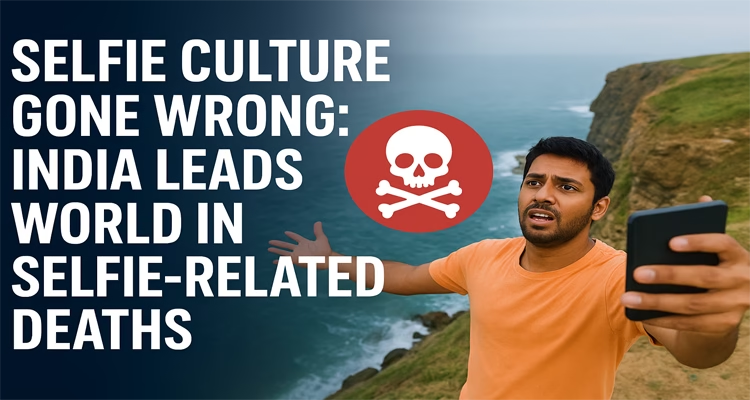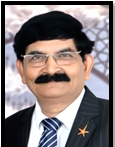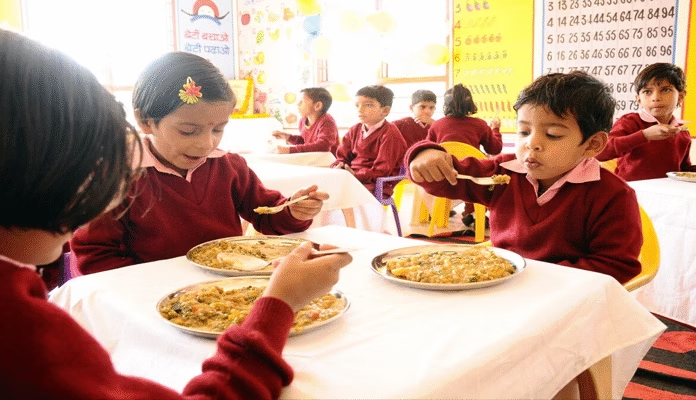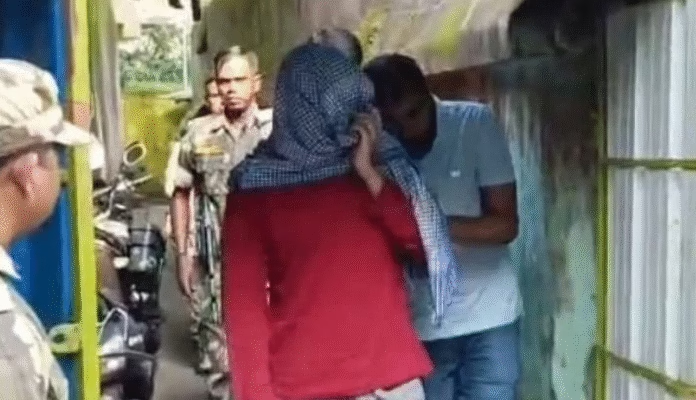
India accounts for 42.1% of global selfie – related deaths, with over 200 fatalities recorded.
Learn why selfies have become dangerous, what is “selfitis”, and safety tips to prevent accidents.
 India has emerged as the deadliest country in the world for taking selfies, accounting for 42.1% of global selfie-related casualties. According to recent studies, between March 2014 and May 2025, India recorded 271 selfie-related incidents, resulting in 214 deaths and 57 injuries.
India has emerged as the deadliest country in the world for taking selfies, accounting for 42.1% of global selfie-related casualties. According to recent studies, between March 2014 and May 2025, India recorded 271 selfie-related incidents, resulting in 214 deaths and 57 injuries.
The selfie has become a major part of modern life. It has transformed the simple self-portrait into something immediate and culturally significant, often linked to identity, self-exploration, and narcissism. Every day, millions of people across the globe raise their cameras to capture selfies and share them with friends on social media. However, the number of selfie-related deaths is steadily rising.
Psychiatrists and doctors are increasingly warning of a disturbing trend: excessive selfie-taking could lead to a mental disorder termed “selfitis”. The American Psychiatric Association has even recognized “selfitis” as a condition, describing it as an obsession with taking selfies. There are two main types of selfies: individual and group selfies, with individual selfie addiction being a particularly alarming concern.
In response, Mumbai has declared 16 no-selfie zones across the city, especially in high-risk areas such as coastal stretches without railings or barriers. Authorities advise the public to avoid taking unnecessary selfies in such places, as the danger far outweighs the thrill.
Clicking a selfie is, in many ways, like gazing into a magnified mirror. Teenagers, in particular, are more preoccupied with their appearance and how others perceive them. For many, selfie-taking becomes a way of seeking identity and meaning in the world. Despite clear warning signs in risky areas, people continue to push boundaries—standing on ledges, cliffs, or building tops—often risking their lives to capture the most dramatic shot.
The most common cause of selfie-related death in India is falling from a great height, as people attempt to capture the perfect image atop cliffs or buildings. In fact, train-related selfie deaths are especially prevalent in India, making them a significant cause for concern. Height-related deaths are followed closely by water-related incidents and a combination of both height and water-related accidents. The clear lesson here is simple: avoid taking selfies on the edge of sea cliffs or dangerous locations if you want to stay safe.
While taking selfies is undoubtedly a modern social phenomenon and fun, it can spiral out of control. To stay safe and avoid becoming obsessed, people should adopt healthier habits—such as reducing the number of selfies they take daily, sharing them only with close friends, and focusing more on real-life experiences rather than the approval of others.
Critics argue that selfies contribute to a superficial generation that values appearance over substance. Although selfies can boost self-confidence, they can also feed a young person’s obsession with self-image, inadvertently revealing far more personal information than intended. Many people take selfies to flaunt activities, places, or possessions without considering who views their posts or how much personal data they are sharing.
Mental health professionals warn that selfie-taking may become a compulsion, particularly for individuals suffering from body image disorders. Some attempt to tweak their appearance through photo-editing applications, striving for the “perfect” selfie result.
For those suffering from selfie mania, experts recommend shifting focus by capturing professional or personal achievements instead of obsessing over appearance. Selfies can certainly be fun, but overemphasis on looks can lead to neglecting what truly matters in life.
Ultimately, it’s crucial to remind young people that comparing themselves to others on social media is unhelpful. Nobody looks perfect all the time, and everyone experiences bad days. True self-worth comes from within, not from likes or followers.
(Wrriten by Vinod Chandrashekhar Dixit)



